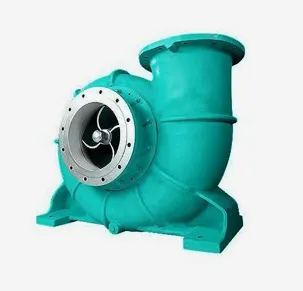Romanian
- Afrikaans
- Albanian
- Amharic
- Arabic
- Armenian
- Azerbaijani
- Basque
- Belarusian
- Bengali
- Bosnian
- Bulgarian
- Catalan
- Cebuano
- Corsican
- Croatian
- Czech
- Danish
- Dutch
- English
- Esperanto
- Estonian
- Finnish
- French
- Frisian
- Galician
- Georgian
- German
- Greek
- Gujarati
- Haitian Creole
- hausa
- hawaiian
- Hebrew
- Hindi
- Miao
- Hungarian
- Icelandic
- igbo
- Indonesian
- irish
- Italian
- Japanese
- Javanese
- Kannada
- kazakh
- Khmer
- Rwandese
- Korean
- Kurdish
- Kyrgyz
- Lao
- Latin
- Latvian
- Lithuanian
- Luxembourgish
- Macedonian
- Malgashi
- Malay
- Malayalam
- Maltese
- Maori
- Marathi
- Mongolian
- Myanmar
- Nepali
- Norwegian
- Norwegian
- Occitan
- Pashto
- Persian
- Polish
- Portuguese
- Punjabi
- Romanian
- Russian
- Samoan
- Scottish Gaelic
- Serbian
- Sesotho
- Shona
- Sindhi
- Sinhala
- Slovak
- Slovenian
- Somali
- Spanish
- Sundanese
- Swahili
- Swedish
- Tagalog
- Tajik
- Tamil
- Tatar
- Telugu
- Thai
- Turkish
- Turkmen
- Ukrainian
- Urdu
- Uighur
- Uzbek
- Vietnamese
- Welsh
- Bantu
- Yiddish
- Yoruba
- Zulu
Telephone: +86 13120555503
Email: frank@cypump.com
nov. . 22, 2024 20:29 Back to list
chemical feed pump
Understanding Chemical Feed Pumps Functionality and Applications
Chemical feed pumps are essential devices in various industries, including water treatment, chemical processing, and agriculture. These pumps are specifically designed to deliver precise volumes of chemicals to specific points in a system, ensuring the desired chemical concentration and reaction rates. This article explores the functionality, types, and applications of chemical feed pumps.
Functionality of Chemical Feed Pumps
The primary function of a chemical feed pump is to accurately deliver chemicals, which can range from simple compounds to complex mixtures, into a process. This accuracy is crucial because both under-dosing and overdosing can lead to system inefficiencies, environmental hazards, or regulatory non-compliance.
Chemical feed pumps work on the principle of creating a pressure differential to move the chemical from a storage container to the intended location. The essential parameters to consider include flow rate, pressure, and the chemical's viscosity and corrosiveness. Advanced models often incorporate control systems that adjust the pump operation based on real-time demands, further enhancing precision.
Types of Chemical Feed Pumps
Chemical feed pumps can be broadly categorized into several types based on their design and operating principle
1. Diaphragm Pumps These pumps utilize a flexible diaphragm that changes shape within a chamber to suck in and expel chemicals. They are known for their ability to handle corrosive and viscous fluids and provide excellent metering accuracy.
2. Peristaltic Pumps These pumps use rollers to compress a flexible tube, effectively pushing the chemical through the tube. Because there are no valves or seals in contact with the fluid, they are well-suited for applications where contamination must be avoided.
3. Gear Pumps Gear pumps utilize interlocking gears to move fluids. While they can handle high viscosities, they are generally not used for corrosive chemicals unless specifically designed with suitable materials.
chemical feed pump

4. Plunger Pumps These pumps employ a plunger that moves back and forth within a cylinder, providing high pressure and flow rates. They are often used in applications requiring substantial force and relatively small flow rates.
5. Smart Pumps With advancements in technology, smart chemical feed pumps have emerged. These pumps incorporate IoT capabilities, allowing for remote monitoring and control, predictive maintenance, and integration with process automation systems.
Applications of Chemical Feed Pumps
Chemical feed pumps find applications in numerous fields
- Water Treatment These pumps are vital in adding disinfectants, flocculants, and other chemicals to water supplies. The precision of chemical dosing is critical in ensuring compliance with health and safety regulations.
- Chemical Processing In the production of chemicals, feed pumps are used to introduce reactants into reactors at controlled rates, which is essential for achieving optimal reaction conditions.
- Agriculture In agricultural practices, chemical feed pumps are employed for fertigation and pesticide application, allowing farmers to enhance crop yields while minimizing chemical usage and environmental impact.
- Food and Beverage Industry These pumps ensure the precise dosing of flavors, preservatives, and other additives, maintaining product quality and adherence to food safety standards.
Conclusion
Chemical feed pumps are indispensable in various industries, providing accurate and controlled delivery of chemicals. Their diverse types cater to different applications, with advancements in technology enhancing their capabilities. As industries continue to focus on efficiency, safety, and environmental compliance, the role of chemical feed pumps will remain critical in achieving these objectives. Understanding the functionality and applications of these pumps is essential for both engineers and operators in ensuring optimal performance and reliability.
-
Custom Drilling Mud and Slurry Pump Supplier - High Efficiency, Tailored Solutions
NewsJun.10,2025
-
Supply Vertical Submersible Sewage Pump High-Efficiency WQ/QW Pumps Supplier
NewsJun.10,2025
-
Premium Sewage Ejection System & Pumps Efficient Waste Removal
NewsJun.09,2025
-
Premium Wholesale Slurry Pump Impellers Durable & Efficient Slurry Handling
NewsJun.09,2025
-
Top Sewage Pump Companies Durable Industrial Solutions for Efficiency
NewsJun.09,2025
-
Heavy Duty Slurry Pumps - OEM High Performance & Bulk Wholesale
NewsJun.09,2025










